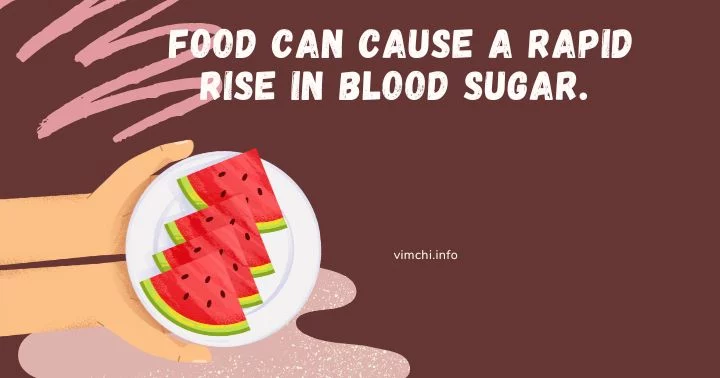Hello there! I see a lot of people working hard just to get rid of the extra body fat from their bodies. But after they have worked out, they drink Gatorade or sugary smoothies. I do drink it. But not after working out. It’s a great drink. But it’s not ideal if you want to burn fats as it can increase blood sugar levels. So, what is the optimal blood sugar level for fat burning? What is the relationship between the two?
Let’s find out more about it here.

Optimal Blood Sugar Level for Fat Burning
Food can cause a rapid rise in blood sugar. When that happens, your body secretes insulin to control the spike. If your sugar goes past 110 mg/dl, your body stores this excess in your muscle and fat cells.
Having high levels of sugar in the blood causes fat preservation, instead of fat burning.
In other words, when your blood sugar levels are too high, the body stores fat. When the level is low, it leads to decreased energy levels. It also causes overeating and cravings.
If you can’t stop eating, you should try this fat burner supplement that also comes with appetite suppressant ingredients. It is a high-stimulant fat burner that can help in supporting your fitness goals.
As an Amazon Associate, we earn from qualifying purchases.
Thus, it’s vital to maintain optimal blood sugar levels for fat burning.
The optimal number varies depending on a person’s individual needs and goals. If your blood sugar level is around 70 to 100 mg/dL, it’s considered normal.
But if you want an optimum level, you need to keep it low.
As mentioned, if it’s too high, your body releases more insulin to transport glucose from the blood into cells to give you energy. The excess will be stored as fat.
When glucose is stored as glycogen, it is not available for the body to burn as fuel. High levels of insulin can inhibit the body’s ability to burn fat.
When the blood sugar levels are too low, the body turns to muscle tissue for energy. It leads to muscle breakdown and decreased metabolism.
It may also cause hunger and cravings, leading to overeating and difficulty maintaining a healthy weight.
To maintain optimal blood sugar levels for fat burning, it is vital to consume a diet rich in whole, unprocessed foods.
You should avoid simple sugars.
Rather, opt for complex carbs, healthy fats, and lean protein. They are foods that are digested more slowly. As a result, it leads to a more gradual release of glucose into the bloodstream.
How to Maintain Optimal Blood Sugar Levels?
Get a Regular Exercise
You need to maintain a moderate weight. And the best way to do that is to exercise regularly.
Exercise can boost your insulin sensitivity. When you’re insulin sensitive, your cells can use the available sugar in the blood.
It also helps your muscles in using blood sugar for energy and muscle contraction.
If you have issues with managing your blood sugar, it’s important to check your levels before and after exercising.
In this way, you will know how to respond to different activities and prevent blood sugar levels from getting too low or high.
Experts also recommend breaking up your sitting time. It means that after sitting for 30 minutes, you should stand up and do some light walking or resistance exercises.
Other forms of exercise you may want to consider are weightlifting, running, dancing, hiking, swimming, and brisk walking.
Any activity that forces you to get up and move can help you beat a sedentary lifestyle.
If you can’t dedicate longer periods of exercise, you can gain benefits from performing shorter sessions. For instance, you can exercise for 10 minutes three times a day. Have a goal of 150 minutes of exercise per week.
Read: Can Keto Diet Cause a Spike to Your Blood Cholesterol?
Control Your Carb Intake

You may choose to follow a ketogenic diet to control your carb intake. This diet requires eating a high amount of fat but limited carbs. It can change how your body stores and uses energy.
Because of how it works, it may ease diabetes symptoms.
With this diet, your body uses fat, rather than sugar, for energy. But this diet wasn’t created for weight loss. Instead, it was designed to treat epilepsy.
If you wish to try it out, it’s ideal to consult your physician first.
On the other hand, if keto is not to your liking, you just have to learn how to manage your carb intake by counting your carbs. It’s a tedious job. You need to be aware of the number you need.
Regulate Calorie Intake By Implementing Portion Control
Weight management promotes healthy blood sugar levels. It has been shown to lower the risk of type 2 diabetes.
To manage your portion sizes, you may measure and weigh your portions. This is tedious at first. But as you do it every day, it becomes a habit.
If you don’t like measuring your portions, try using smaller plates. Then, avoid eating in a restaurant. Then, make sure to check the serving sizes of your food.
Keeping a food journal is also ideal. This will help you keep track of how much carbs you’re eating.
To make it easier, you may use a mobile app to monitor your calorie and carb intake.
Eat Low Glycemic Index Food to Prevent Sugar Spike
The glycemic index (GI) measures how carbs are quickly broken down during digestion. It also measures how your body absorbs the carbs.
The amount and type of carbs you consume determine how the food affects your blood sugar levels. Eating low-GI foods can effectively reduce blood sugar levels in people who suffer from diabetes.
What foods to eat?
There are plenty of options. But the most common ones are barley, lentils, legumes, whole wheat pasta, bulgur, and non-starchy vegetables.
You may also consider adding high protein and healthy fats to minimize blood sugar spikes after eating.
Takeaway
The optimal blood sugar level for fat burning is between 70 and 100 mg/dl. The lower the number, the better it is. But to achieve it, it is vital to consume a balanced diet of whole foods. Then, make sure to engage in regular exercise. Maintaining optimal blood sugar levels doesn’t only promote fat burning but also improves overall health while it reduces the risk of chronic diseases.

Speak Now ... Or Forever Hold Your Peace